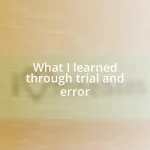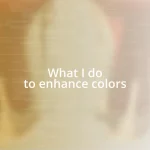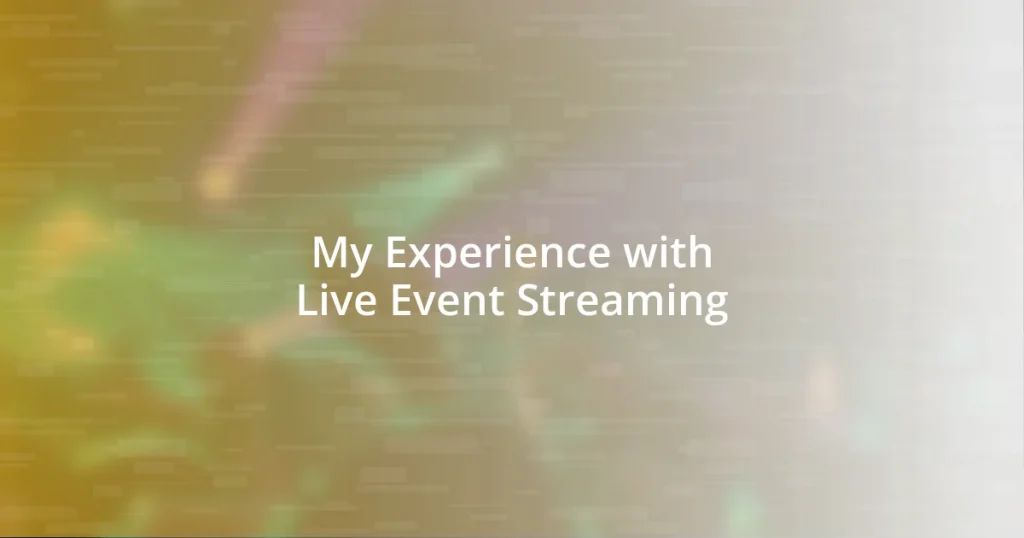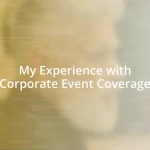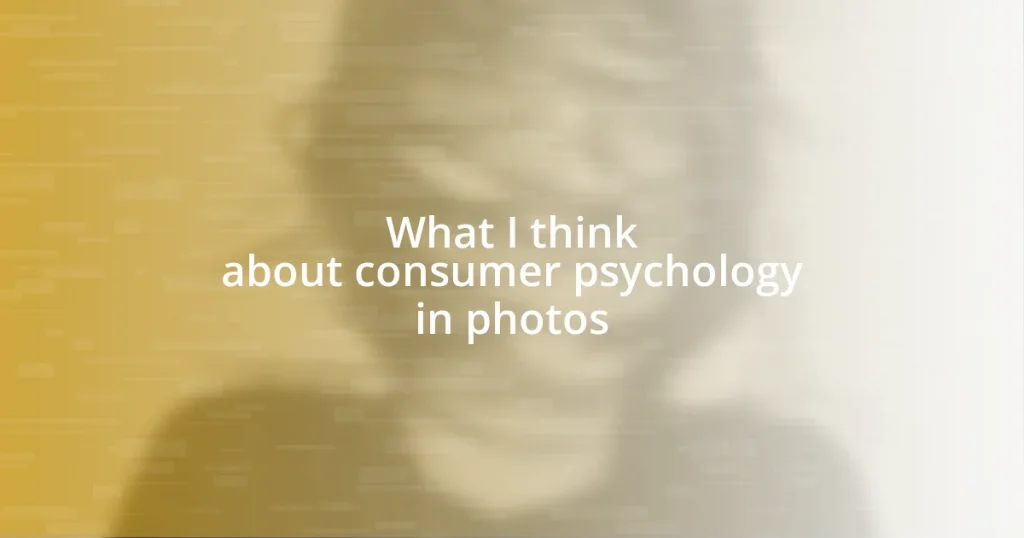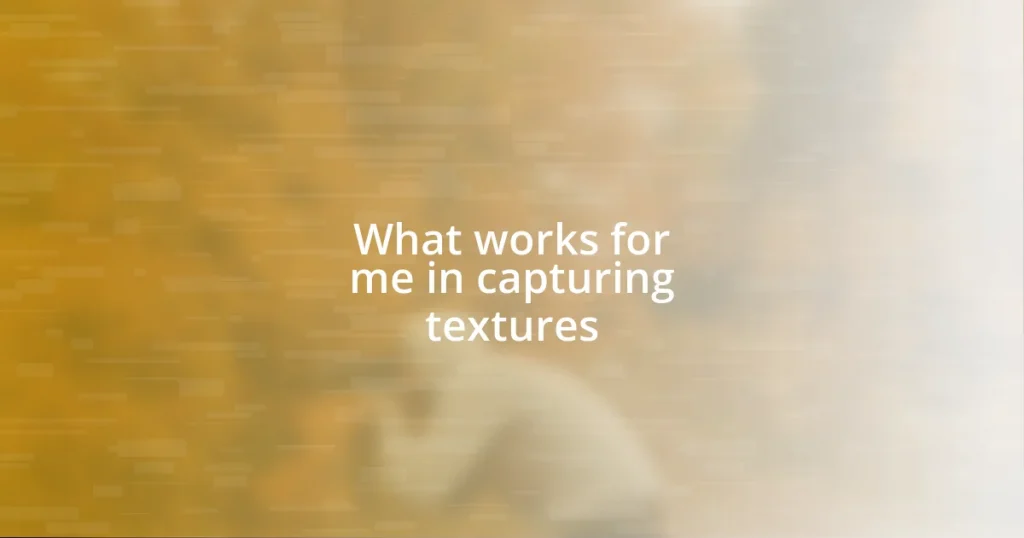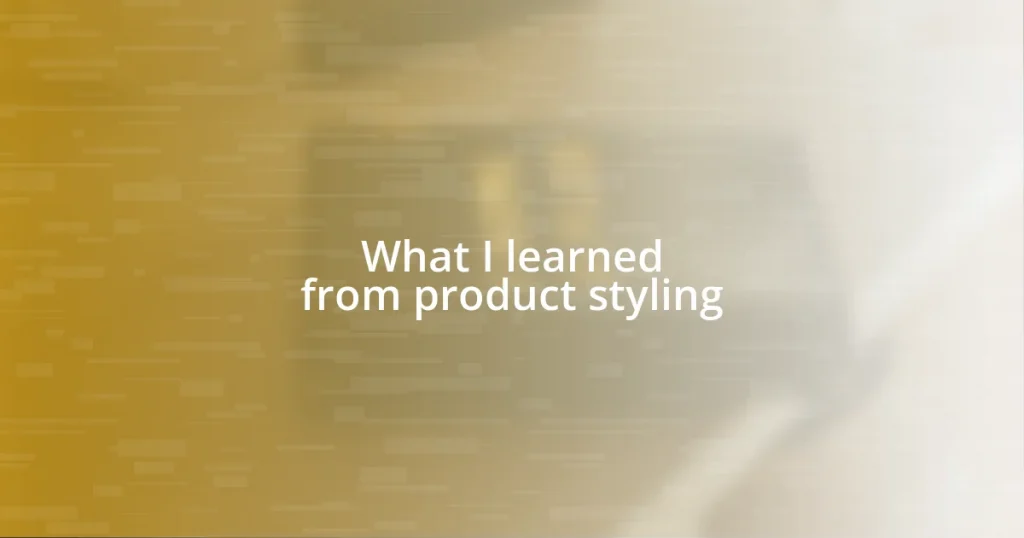Key takeaways:
- Live event streaming enhances audience connection and interactivity, allowing participation from anywhere, but raises questions about authenticity compared to in-person experiences.
- Selecting the right streaming platform and using quality equipment are crucial for a successful event, influencing viewer engagement and overall experience.
- Post-event analysis through feedback and metrics is essential for improving future streams, providing insights into content effectiveness and audience interest.
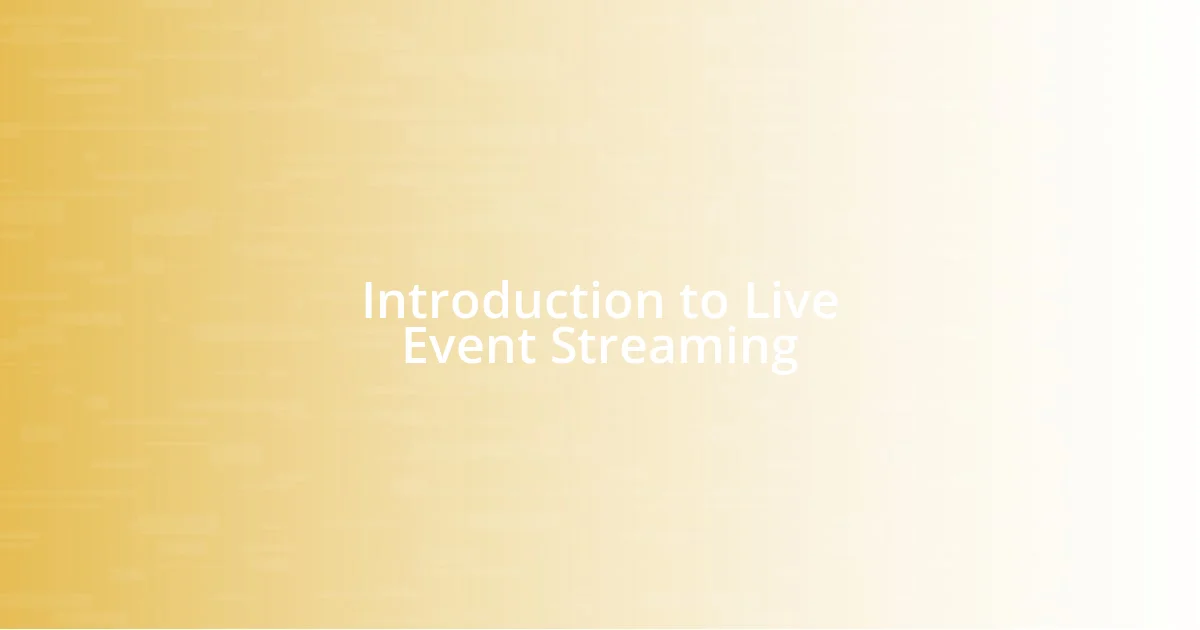
Introduction to Live Event Streaming
Live event streaming has transformed the way we experience events, enabling audiences to connect from anywhere in the world. I remember attending a concert via live stream during a challenging period when in-person gatherings were impossible. The thrill of seeing my favorite band play, even from my living room, was an incredible reminder of how technology can bridge distances and foster a shared experience, even when physically apart.
What makes live event streaming particularly exciting is the interactivity it allows. Have you ever watched a live sports event and felt the adrenaline rush as you join thousands of others shouting for your team? I recall a charity marathon where viewers could donate in real-time, watching the contributions roll in on-screen. That moment was powerful; the ability to support a cause while immersed in the live action created a sense of community that felt almost tangible.
From what I’ve observed, the accessibility of live streaming is a double-edged sword. While it breaks barriers for audiences who might otherwise miss out, it also raises questions about the authenticity of the experience. Can a screen truly capture the energy of a live audience? I often ponder this as I prepare for my own live streams, striving to convey that unique atmosphere to my viewers, ensuring they feel a part of something special—even from miles away.
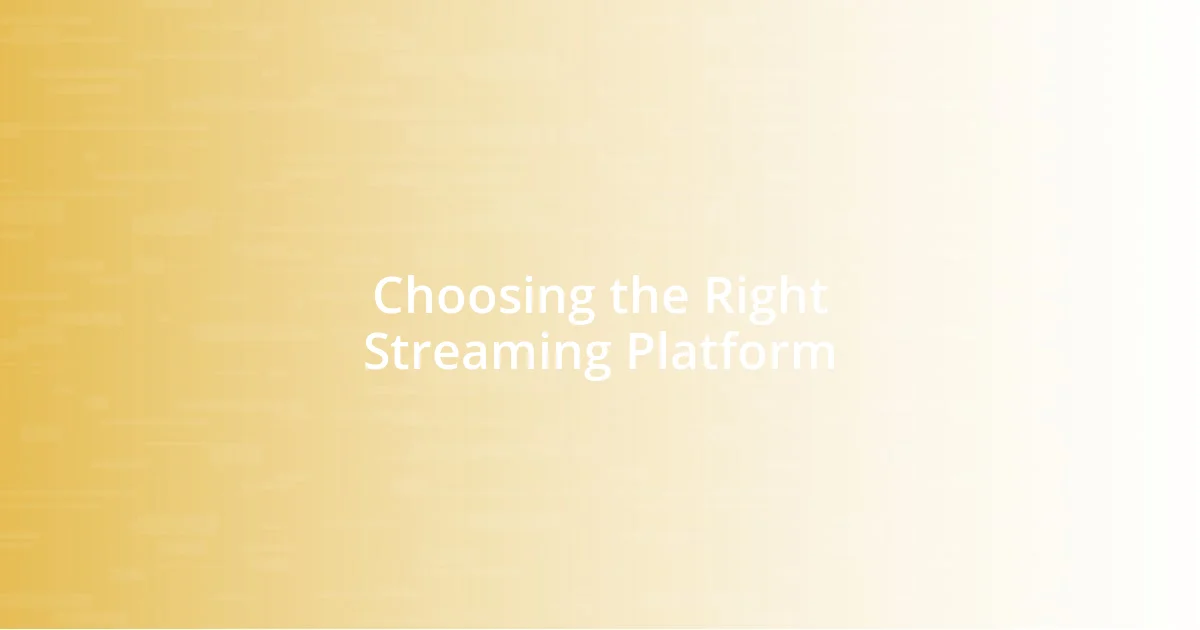
Choosing the Right Streaming Platform
When selecting the right streaming platform, I’ve learned that it’s essential to consider your audience and your content type. For instance, if you’re streaming an intimate Q&A session, a platform like Zoom might create a more personal atmosphere. Alternatively, for larger events, platforms like YouTube or Facebook Live offer extensive reach and engagement tools. Each platform has its unique features, and understanding the nuances can significantly impact how your event is received.
From my experience, I’ve found that the user interface and ease of access are crucial. I once streamed a cooking class on a platform that was complicated to navigate. It led to technical difficulties that frustrated both me and my audience. On the flip side, using a user-friendly interface allowed me to focus on what truly mattered: delivering quality content while connecting with viewers. Always test the platform ahead of time to eliminate these worries and ensure a smooth streaming experience.
Let’s not forget about the analytical tools available on these platforms. Having access to real-time stats helped me adjust my strategies live during a gaming event I hosted recently. I could see which parts of the stream engaged viewers the most, allowing me to tailor the content dynamically. This level of insight is invaluable. By assessing your options comprehensively, you can find a platform that caters to your specific needs.
| Platform | Best For |
|---|---|
| YouTube Live | Large audiences & high engagement |
| Facebook Live | Audience interaction through comments |
| Zoom | Intimate sessions & group interaction |
| Twitch | Gaming & interactive streaming |
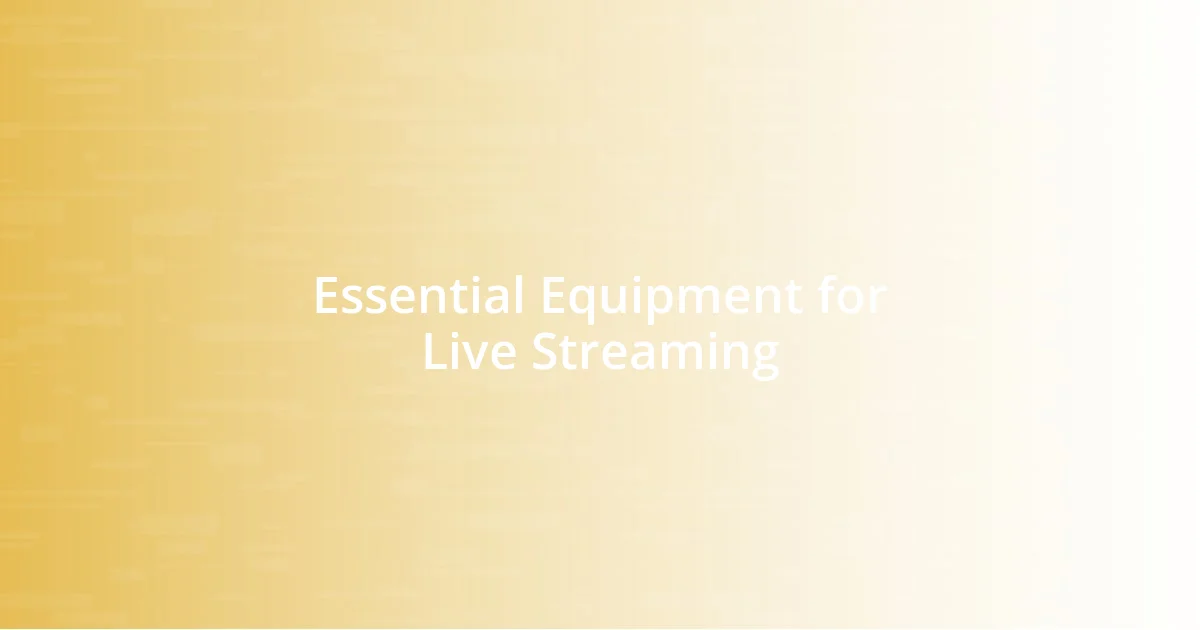
Essential Equipment for Live Streaming
When diving into live event streaming, having the right equipment is crucial for an exceptional experience. In my journey, I discovered that investing in quality gear greatly enhances the viewer’s engagement. It’s like the difference between a hazy, muffled concert on a phone versus a crisp, clear production that pulls you in. I remember my first time using a professional camera; the image quality was so vibrant that it felt like I was right there, front row, sharing that moment with my audience.
Here’s a list of essential equipment that can elevate your live streaming experience:
- Camera: A good DSLR or mirrorless camera offers stunning visuals and depth.
- Microphone: Invest in an external microphone for clear audio; a shotgun mic works wonders for focused sound.
- Lighting: Softbox lights or ring lights can dramatically improve visibility and professionalism.
- Encoder: A reliable encoder, like OBS or Wirecast, helps streamline your stream to various platforms.
- Tripod or Stabilizer: A sturdy tripod keeps your shots steady, while a stabilizer can add a dynamic feel if you’re moving around.
As I prepared for a recent virtual panel discussion, I realized how much of a difference these tools made in delivering quality content. I set up my lighting and was amazed at how it transformed the entire setting. It felt rewarding to see viewers commenting positively about how professional and clean everything looked. Each piece of equipment, though seemingly small, played a vital role in creating a memorable experience that kept everyone engaged and wanting more.
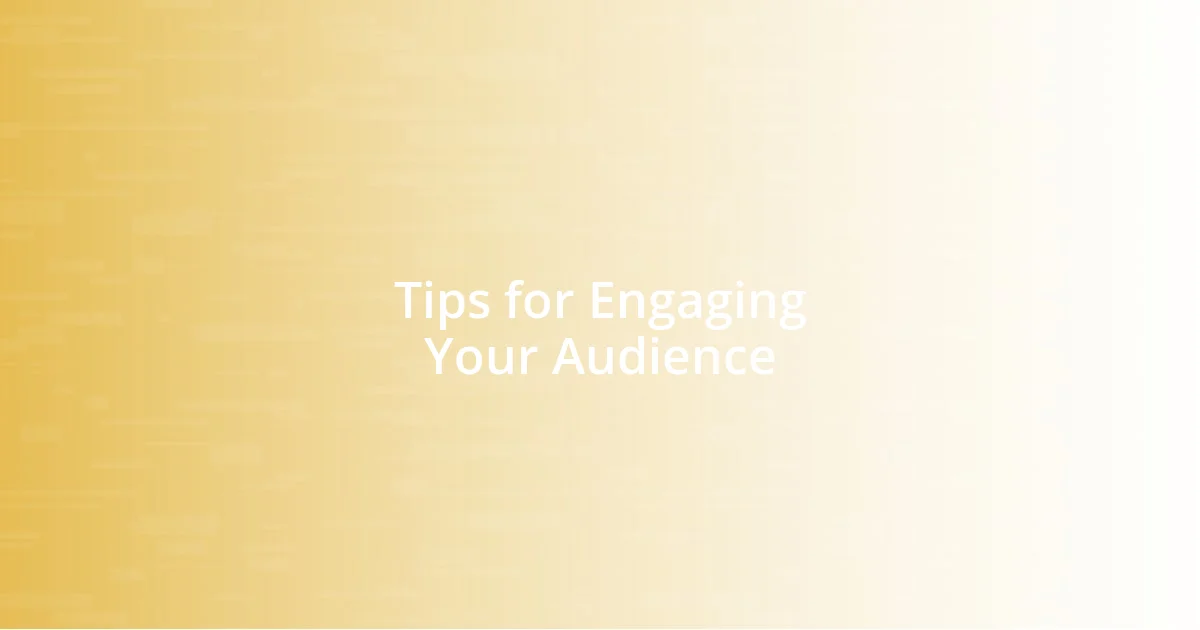
Tips for Engaging Your Audience
Engaging your audience during a live stream goes beyond just delivering your content; it’s about creating a connection. I remember hosting a virtual art tutorial where I intentionally asked viewers to share their progress in the comments. It transformed the event from a one-way street into an interactive community. Have you ever thought about how inviting your audience into the conversation can elevate their experience? It’s powerful!
Another effective strategy is to use polls and Q&A sessions. I’ve found that actively involving the audience makes them feel valued and heard. During a recent webinar, I sprinkled in quick polls throughout the presentation to gauge opinions on various topics. The energy shifted as participants eagerly shared their thoughts, which boosted engagement levels significantly. It’s amazing what a simple question can do to ignite excitement!
Lastly, I can’t stress enough the importance of maintaining energy and enthusiasm. I recall a live-streamed fitness class where I was feeling a bit under the weather. Initially, I thought I could just power through, but it left my audience feeling flat. Once I focused on my passion for the workout, my energy became contagious. Have you ever noticed how a host’s excitement can amplify the audience’s experience? I truly believe that enthusiasm is infectious, and it can turn a good event into a memorable one.
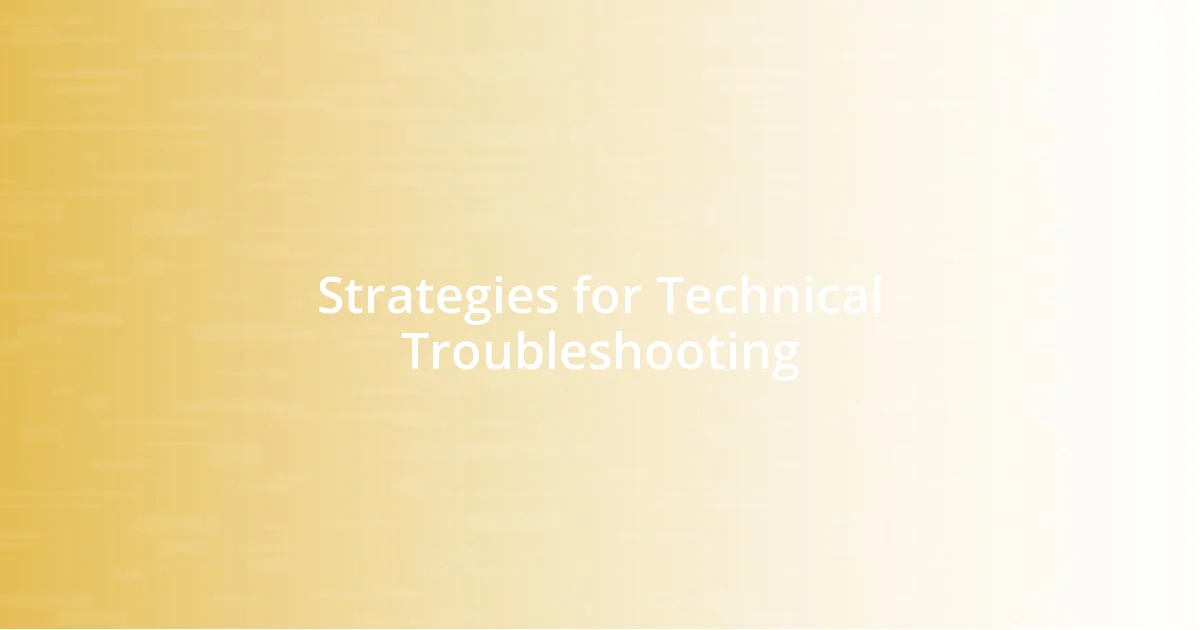
Strategies for Technical Troubleshooting
When technical issues arise during a live stream, the first step I take is to remain calm and composed. I remember one instance when my internet connection dropped unexpectedly right before a big event. The panic was real! However, I quickly turned to my backup plan—my mobile hotspot. Have you ever experienced that heart-stopping moment when technology lets you down? Having a contingency in place can make all the difference.
Another strategy I find effective is running tests before going live. This is something I learned the hard way one evening during a music performance when the audio quality was less than desirable. Since then, I’ve made it a point to do a full run-through with all equipment and settings a day in advance. How much easier is it to troubleshoot issues ahead of time rather than while the world is watching? Preparation not only boosts your confidence but can also save you from the embarrassment of technical glitches.
Lastly, engaging with a tech-savvy friend or a backup operator can provide invaluable support during live sessions. I’ve had times when I was immersed in my content, only to have someone step in to handle technical concerns in the background. Their expertise offered peace of mind, allowing me to focus on delivering a great experience. Have you ever thought about how a collaborative approach can alleviate stress during live streaming? It’s like having your very own safety net!
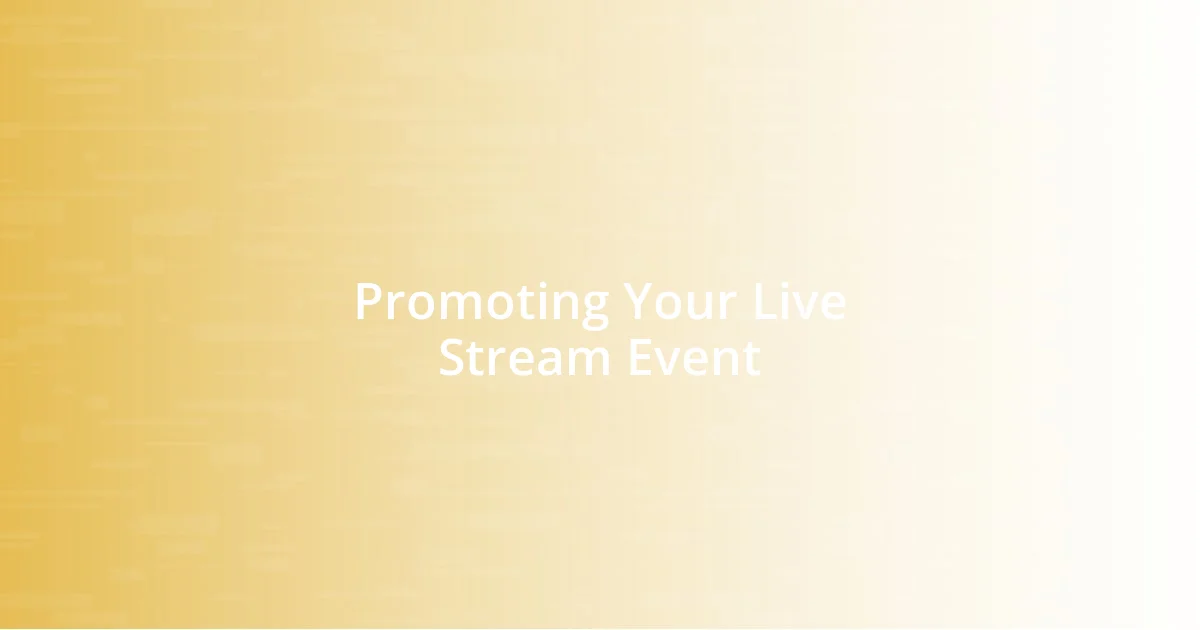
Promoting Your Live Stream Event
Promoting your live stream event starts long before you hit the “Start” button. I’ve always found that creating buzz in advance is essential. For instance, when I announced my last online concert, I used social media to share sneak peeks and behind-the-scenes footage. Did you know that anticipation can significantly boost attendance? It really gets people talking and builds excitement.
Another strategy that’s worked well for me is collaborating with influencers or partner brands. I remember when I teamed up with a popular local influencer for a cooking demonstration. Their followers became interested and engaged, which expanded my audience tremendously. Have you ever connected with someone whose audience aligns with yours? It can create a win-win situation, drawing new eyes to your event.
Email marketing has also shown its effectiveness in my experience. A few days before my last workshop, I sent a targeted email campaign to my subscribers, including an exclusive registration link. I made sure to personalize the message and add a compelling subject line. What I’ve noticed is that a well-timed, thoughtful email can remind potential attendees about your event and prompt them to register. So, how can you harness the power of direct communication in promoting your live stream? It could be the game-changer you’re looking for!
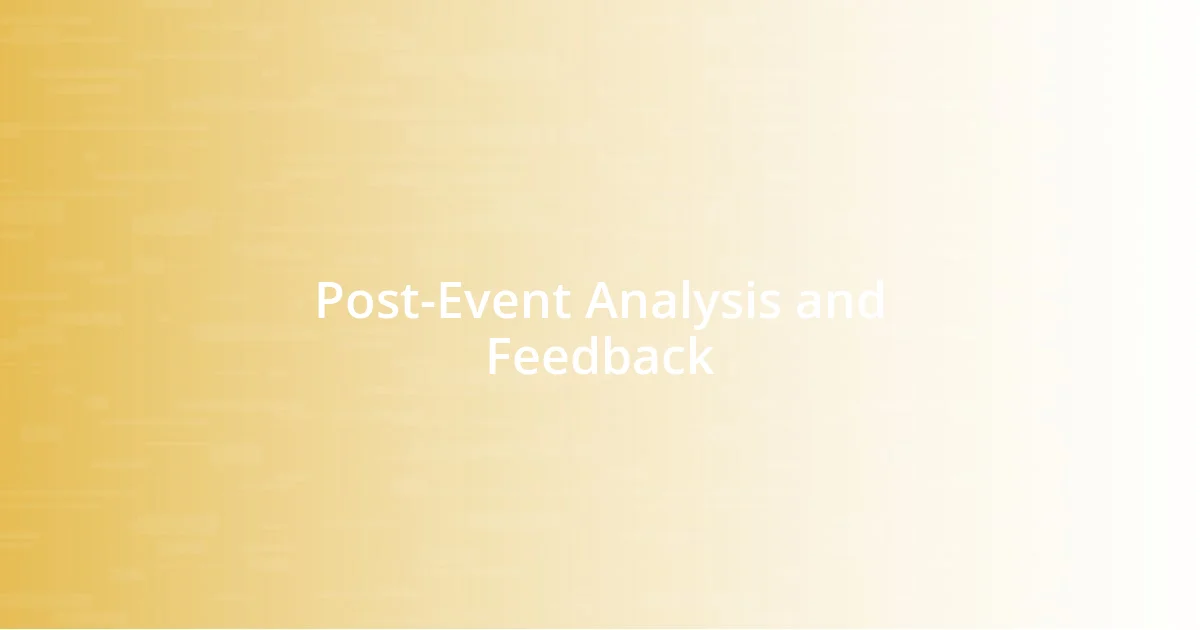
Post-Event Analysis and Feedback
After the event wraps up, I always dive into a post-event analysis to understand what went well and what could use improvement. Recently, after a panel discussion I hosted, I gathered feedback from both viewers and participants. Their perspectives provided a treasure trove of insights, highlighting areas where engagement was high and where we may have lost some attention. Have you ever considered how feedback can be the key to unlocking your next success?
I also make it a point to review metrics such as viewer engagement and drop-off rates. For example, during my last live-streamed workshop, I noticed that viewers tended to leave just after a certain topic was introduced. That prompted me to rethink my content flow for future sessions. It’s fascinating how data can guide your storytelling approach. Are you taking advantage of analytics in your own events to inform your strategy?
Finally, I prioritize a debriefing session with my team. This isn’t just about discussing numbers; it’s a time for candid conversations around our emotional takeaways as well. I remember feeling a resurgence of excitement when I realized how much we’d grown as a team during the event’s challenges. How often do you reflect on the emotional journey of hosting live events? It’s an essential part of the learning process that can enhance both performance and camaraderie.




